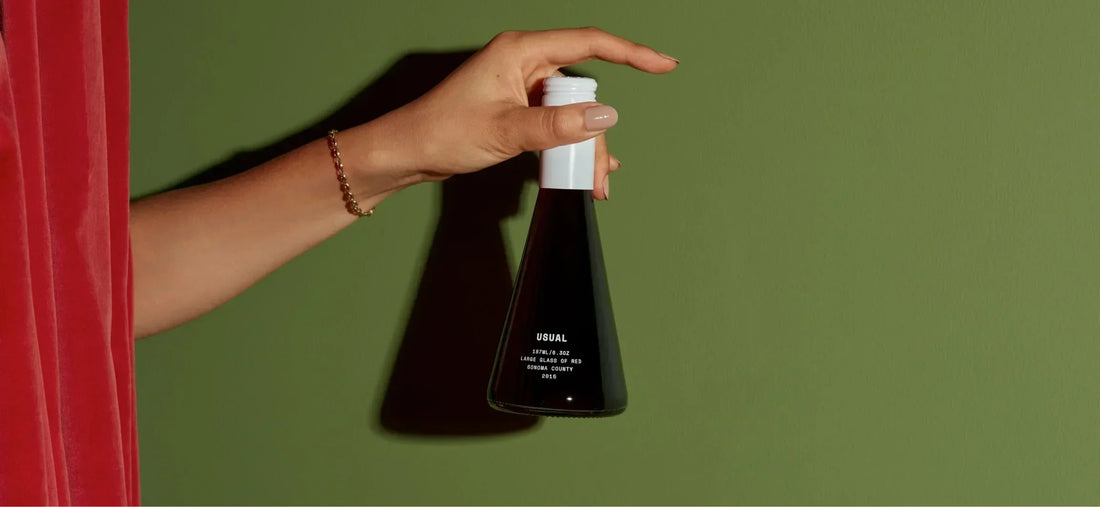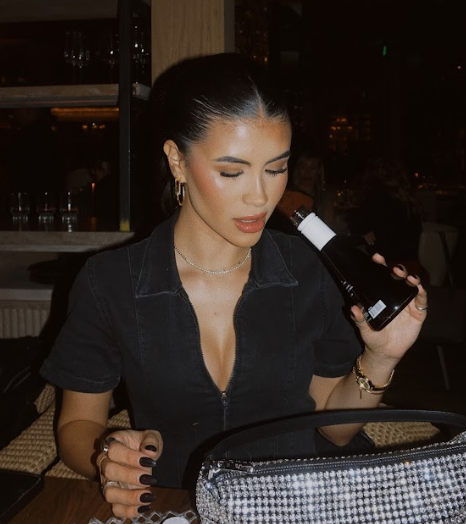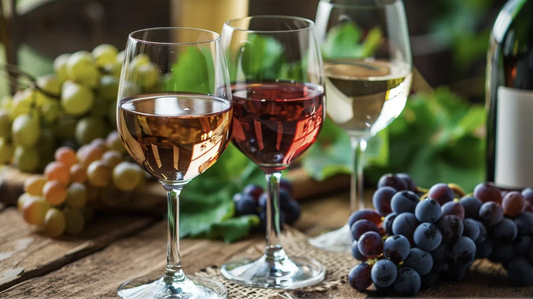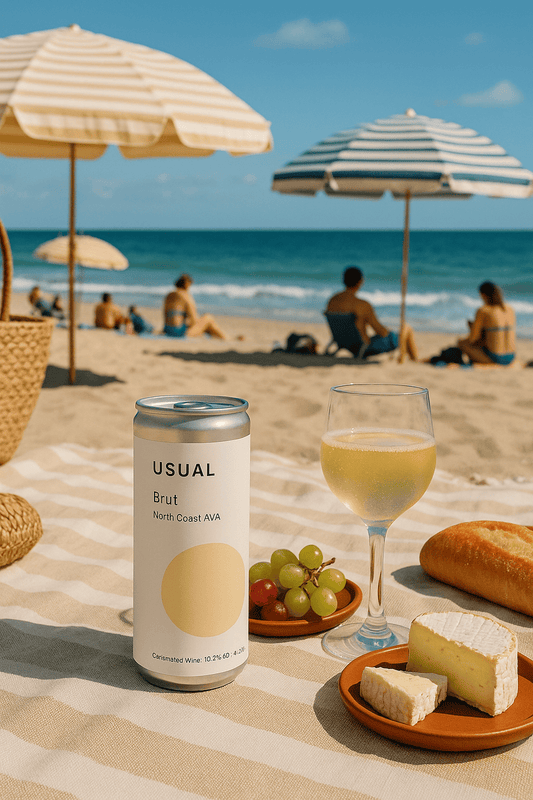
Merlot vs. Cabernet: A Side-by-Side Guide for Red Wine Lovers
Matt CoenenWhen it comes to red wine, two names consistently rise to the top: Merlot and Cabernet Sauvignon. These varietals are beloved for good reason — both offer deep, complex flavors, excellent versatility with food and a long history in iconic wine regions around the world. But despite their shared popularity, Merlot and Cabernet are distinctly different in taste, texture and personality.
Whether you’re picking a bottle to pair with dinner or simply curious about what sets them apart, this side-by-side guide breaks it all down.
What Are Merlot and Cabernet Sauvignon?
Merlot and Cabernet Sauvignon are two of the world’s most popular red wine grapes, both originally from France and now grown in wine regions across the globe.
Merlot is known for producing smooth, fruit-forward wines with soft tannins and approachable flavors. It's often used as a blending grape to add roundness and softness to more structured varietals.
Cabernet Sauvignon is famous for its bold flavor, firm tannins and excellent aging potential. It’s one of the most widely planted red grapes in the world and often serves as the backbone of many iconic red blends — especially in Bordeaux.
While each can stand strong on its own, they’re frequently blended together to create wines that offer both richness and balance.
A Quick Breakdown of How Merlot and Cabernet Compare
Before diving into tasting notes and food pairings, here’s a quick overview of how these two red wine staples stack up:
This cheat sheet is just the beginning. Up next, we’ll explore what these tasting notes really mean — starting with the flavor profiles that define each varietal.
Flavor Profiles: What’s in the Glass
Merlot and Cabernet Sauvignon may share a red wine lineage, but their flavor profiles tell very different stories.
Merlot is known for its smooth, plush character and ripe, red fruit notes. Think juicy plum, cherry, raspberry and hints of chocolate or mocha — especially when it’s grown in warmer climates. It’s the kind of wine that feels soft and welcoming from the first sip, making it a go-to for casual evenings and comfort food pairings.
Cabernet Sauvignon, on the other hand, brings a bolder, more intense experience. Expect darker fruit flavors like blackberry, blackcurrant (also known as cassis) and even touches of green pepper, graphite or cedar, especially when aged in oak. Its structure and complexity make it a favorite for red wine lovers who enjoy depth and nuance.
Both grapes express themselves differently depending on where they're grown. Cooler climates (like Bordeaux or coastal California) tend to produce more herbaceous or earthy notes, while warmer regions yield riper, more fruit-forward wines.
Tannins and Texture: How They Feel
One of the biggest differences between Merlot and Cabernet Sauvignon is how they feel in your mouth — thanks largely to tannins.
Tannins are naturally occurring compounds found in grape skins, seeds and stems. They’re what give red wine that dry, slightly puckering sensation, especially around your gums. Cabernet Sauvignon is high in tannins, which contributes to its bold structure and age-worthiness. If you've ever had a red wine that felt powerful or grippy, it was likely a Cabernet or a similar varietal.
Merlot, by contrast, has softer tannins that create a smoother, rounder texture. It’s less drying and more supple on the palate, which is part of why Merlot is often seen as easier to drink (especially for those just getting into red wine).
Both styles have their place: choose Cabernet when you want intensity and structure, and reach for Merlot when you're after something plush and easygoing.
Food Pairings: What to Serve With Each
Pairing wine with food is part art, part science, and understanding the personality of each wine can help you make better choices at the table.
-
Merlot is versatile and plays nicely with a wide range of dishes thanks to its soft tannins and fruit-forward profile. It shines with roasted chicken, turkey, mushroom risotto, and even tomato-based pastas. Its smoothness also makes it a good match for mild cheeses and lighter red meat preparations like pork tenderloin or lamb meatballs.
-
Cabernet Sauvignon — with its bold structure and higher tannin content — calls for richer, heartier fare. Think grilled ribeye, braised short ribs, or a thick mushroom burger. Its depth pairs beautifully with aged cheeses like cheddar or gouda, and it’s a natural fit for anything cooked on the grill or slow-roasted to perfection.
A simple rule of thumb: pair Merlot with softer, subtler flavors and Cabernet with bold, umami-rich dishes.
Aging Potential and When to Drink
Not all red wines are meant to sit in a cellar. Understanding when to open a bottle can make a big difference in taste and texture.
-
Merlot is typically crafted for early enjoyment. Its smooth tannins and ripe fruit flavors often peak within a few years of bottling, especially in new-world styles. That said, Merlot from regions like Bordeaux’s Right Bank can age beautifully for a decade or more, developing earthy, savory complexity over time.
-
Cabernet Sauvignon is a classic candidate for aging. Its firm tannins and layered structure allow it to evolve gracefully over many years. In well-made bottles, you’ll see flavors deepen from bold black fruit to notes of leather, cedar and spice with age.
Blended Beauty: When Merlot and Cabernet Work Together
While Merlot and Cabernet each stand strong on their own, they’re often at their best when working as a team. Blending these two grapes is a time-honored tradition — especially in Bordeaux — where the goal is to create a wine that balances structure with softness, depth with approachability.
Cabernet Sauvignon brings the tannic backbone, dark fruit intensity, and aging power. Merlot rounds things out with plush texture, juicy red fruit, and a smooth finish. Together, they create a wine that’s layered, expressive and easy to love.
Enjoy Red by Usual Wines
At Usual Wines, we’ve reimagined the classic red blend to make it balanced and incredibly drinkable. Our Red is made with Cabernet Sauvignon, Merlot, Syrah and Petit Verdot — grapes traditionally used in Bordeaux-style blends, but grown in the warm California sun for a fruit-forward twist.
The result? A smooth yet bold wine with tasting notes of muddled raspberry, black cherry and fennel. It’s everything we love about red wine — structured, flavorful and versatile — packaged in single-serve bottles so it’s always fresh, no matter when or how you open it.
Frequently Asked Questions
1. What’s the main difference between Merlot and Cabernet Sauvignon?
Merlot is typically softer, fruitier and more approachable, while Cabernet Sauvignon is bolder, more tannic and built for aging.
2. Can Merlot and Cabernet be blended together?
Yes — these grapes are often blended to create balanced, complex red wines that combine structure (from Cabernet) with smoothness (from Merlot).
3. What grapes are in Usual Red?
Usual Red is a blend of Cabernet Sauvignon, Merlot, Syrah and Petit Verdot, designed to offer bold flavor, smooth texture and great drinkability.
4. How big is a bottle of Usual Wine?
Each bottle of Usual Wine is 6.3 oz (187 ml) — just over a standard glass — so you can enjoy a fresh pour anytime without opening a full-size bottle.








